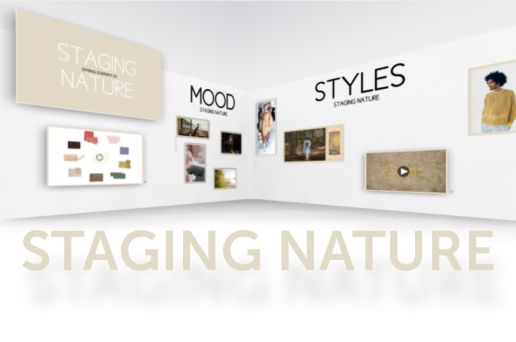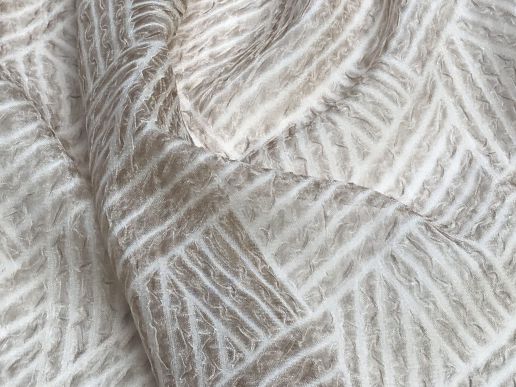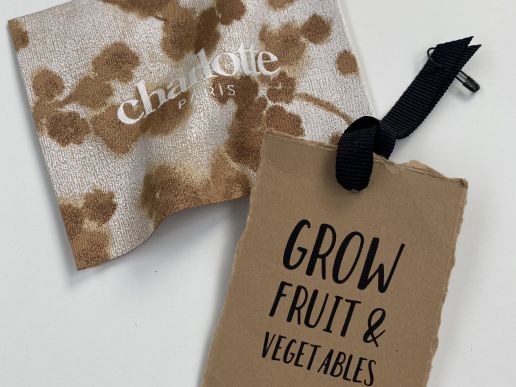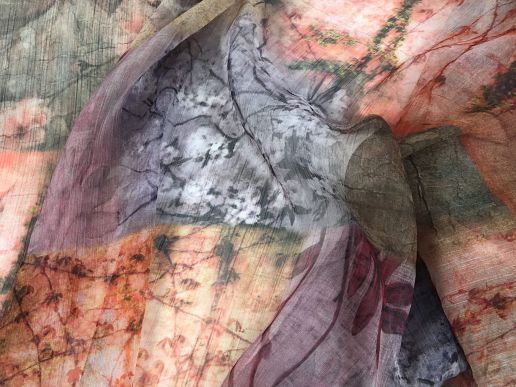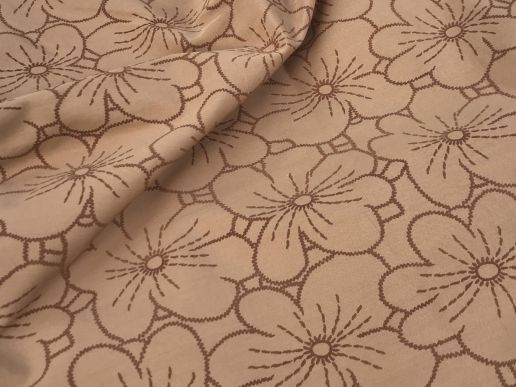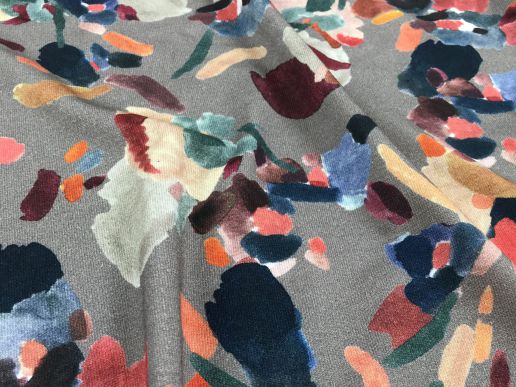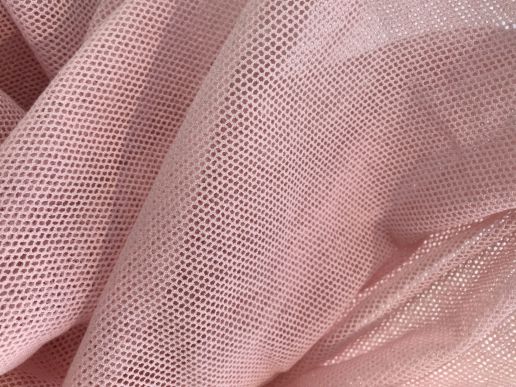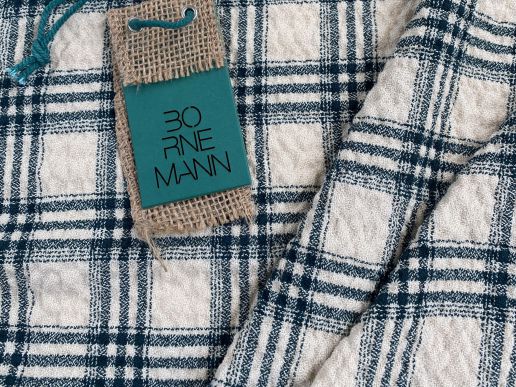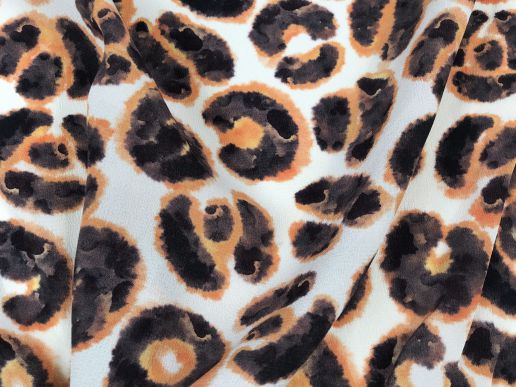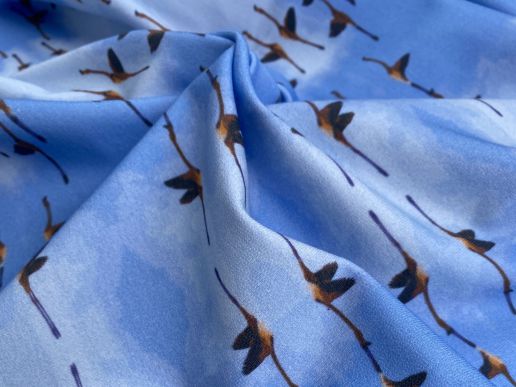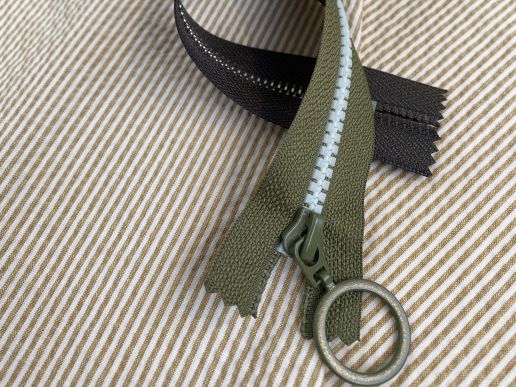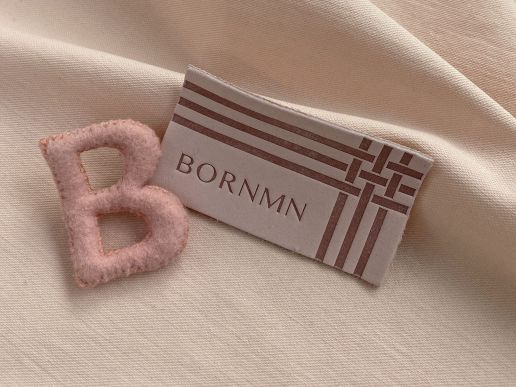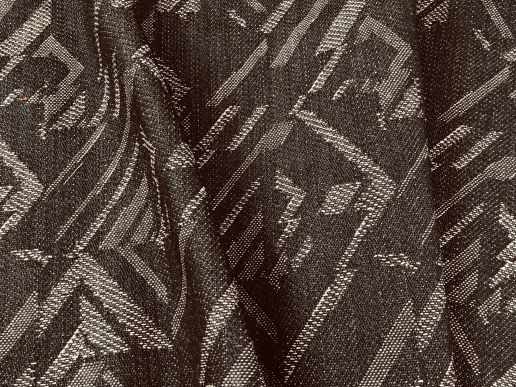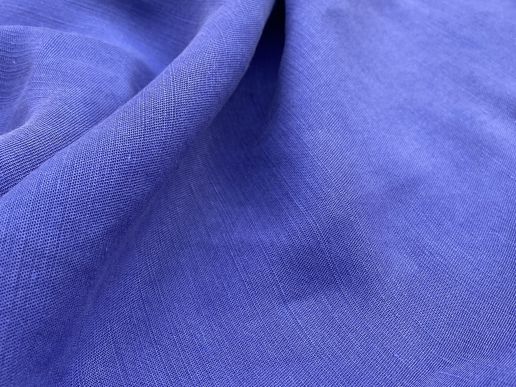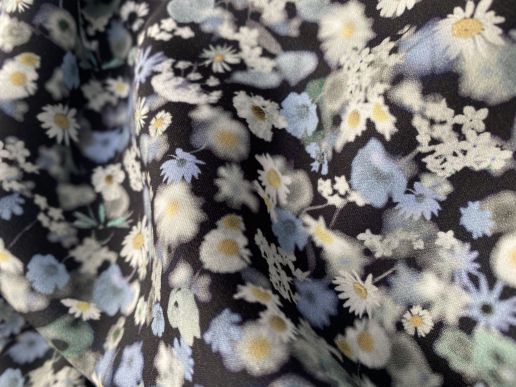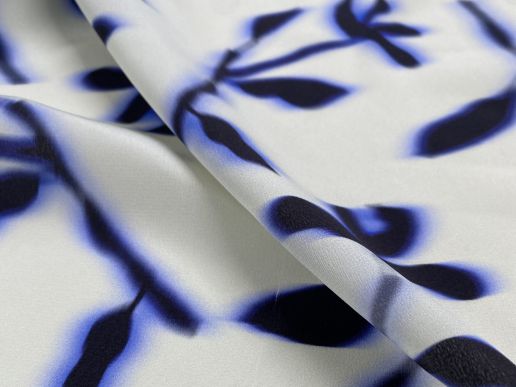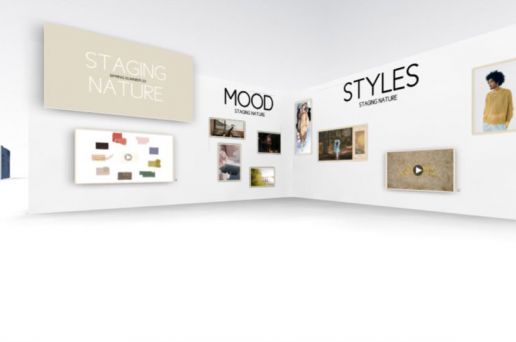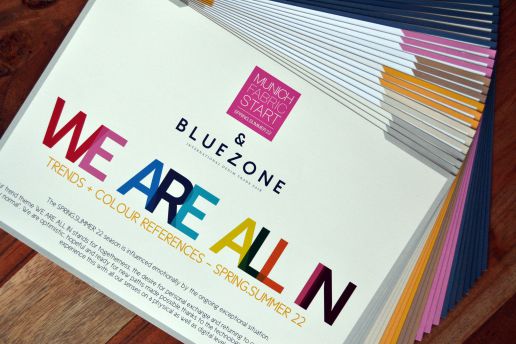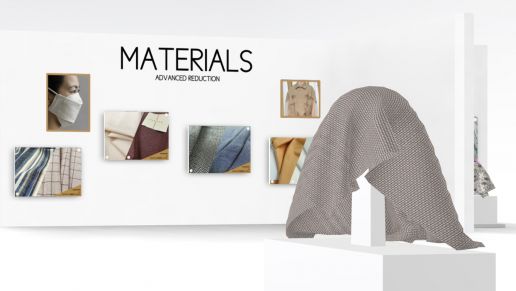Digitisation
SS 2022 Trend Analysis: Staging Nature
WE ARE ALL IN is our overall theme for this season, which encompasses the four major trend themes for prêt-à-porter plus a concentrate forecast for denim. With this we recognize the exceptional situation we all will face this year which makes season a very emotional one.
Our Spring.Summer 22 trends are a mixture between romantic and melancholy influences with real and imaginary places filled with ambition and inspiration. To get started, let us briefly introduce you to the 5 trend forecasts, which are also represented in the DIGITAL TREND SPACE as 5 distinct exhibition rooms:
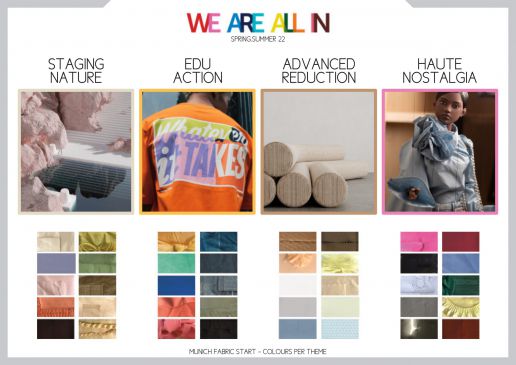
STAGING NATURE – nature becomes our backdrop while we orchestrate and define ourselves in landscapes.
EDU ACTION – stands for education and takes action to empower us as we reflect on meaningful protests and high-tech remedies.
ADVANCED REDUCTION – champions minimalism with progressive performance basics.
HAUTE NOSTALGIA – reflects on romanticised memories of the past to bring together different heights over the decades.
At BLUEZONE we embark on a journey through time, from the traditional indigo legacy to contemporary objectivity and the vision of a phygital hybrid denim world.
WE ARE ALL IN Trend Theme: STAGING NATURE
More than anything right now, we desire to be closer to nature: Nature is seen as a stage – to present ourselves, to curate nature and to stage ourselves in nature. This desire for nature comes from a combination of what really exists in the countryside and what we long for. Being outside in nature and living in the countryside is idealised. We find an idyllic harmony amidst a simplistic and romanticised family life.
“Nature! We are surrounded and embraced by nature – unable to get out of it and unable to go deeper into it” – Johann Wolfgang, Goethe
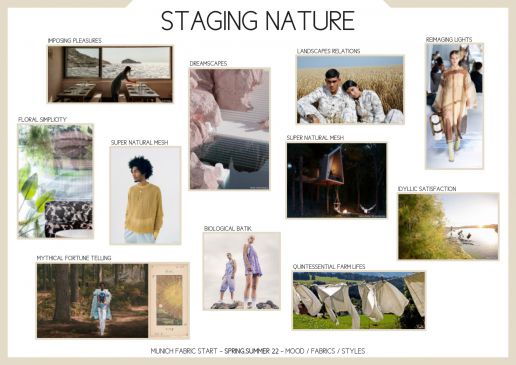
MOOD
STAGING NATURE is all about feeling and enjoying the energy of nature: fresh air, clear water, the calm and safe feeling that nature gives you. People long to take conscious time for good moments. Digital storytellers emerge and search for digital ways to build natural worlds and landscapes, although dreamscapes are surreal, they are so close to reality that they seem nearly plausible.
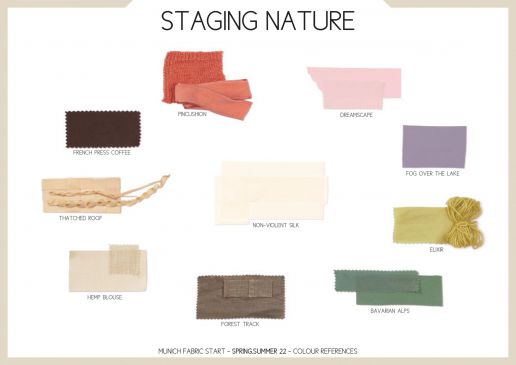
COLOUR
The STAGING NATURE colour palette consists of natural, harmonious colours. Central to this trend is the key colour Off-White, reminiscent of raw cotton. This natural white tone is complimented by the natural colours of linen and wheat. Liveliness is created by light Orange and Red tones that bring peaches and cherry blossoms to mind. The nature inspired colour mood is supported by three shades of Green: Anise, Meadow Green and Khaki. A violet-blue water tone rounds off the colour palette for STAGING NATURE.
FASHION
STAGING NATURE stands for casual, simple looks. Light and comfortable outfits idealise nature with stylised prints, playing with light and shadows, landscapes, grains and slightly romantic translucence.
MATERIALS
The materials for this trend theme stay true to the values of STAGING NATURE: Classic textiles which are produced responsibly and locally without the usage of chemicals. Nature is also used to add aesthetic elements, such as using flower prints, natural dyeing and features prints inspired by tarot cards – a fusion between looking into the future and reflecting on oneself.
There is an enormous need for real contact again and we now meet in a ‘phygital’ space which exists between the physical and digital worlds. We strive to come together again, to see each other and use our tactile senses. With this, we find new ways to connect and pave the way for positive, hopetimistic progress, because this is the only way forward.
To bridge the gap between physical and digital interaction we have created this 3D digital trend space for you to explore.
Taking Steps towards Digitisation
Digitisation is more important than ever. Accelerated by the global pandemic, partnerships and workflows between suppliers and fashion brands have become increasingly more digital. Fabric mills focusing on digitisation will not only cater to a brand’s digital product creation but also greatly increase customer service, reduce costs and reduce resources.
In most cases, fashion brands would digitise their fabric swatches in-house, with the swatch ordered and shipped this is a process which can take as long as 4 weeks. To optimise this process, there is a greater push to move the digitisation of fabrics from brands to the suppliers. With this shift, designers can immediately begin their design process, allowing them to move up their ordering schedule for the collections accordingly.
In a move which we hope will encourage and support our exhibiting manufacturers in the potential advantages of fabric digitisation, we have digitised and showcased a selection of new material developments in the WE ARE ALL IN Digital Trend Space for the new Spring.Summer 22 season.
We first introduced the concept that fabric suppliers will offer a digital twin alongside physical swatches at our 2019 edition of Keyhouse. After successfully demonstrating the individual steps of fabric digitisation in the Digital Fabric Lab, we have now succeeded in creating a realistic image of digital fabric samples in cooperation with individual partners from this network.
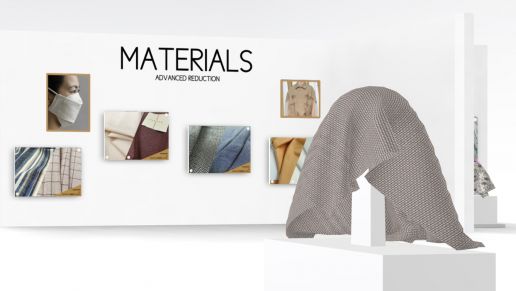

We are acting on behalf of the industry to enter the next phase of digitisation and communicate the advantages to proactively adopt 3D technology. Thanks to Triple Tree software developers, Vizoo, material visualisation specialists and Caddon as our experts in multispectral colour communication, we could visualize selected fabrics from our exhibitors as digital samples in our Trend Space.
We are planning further exciting projects with our partners in the near future. For now, we invite you to discover the 3D digital fabrics and trend inspirations showcased in our DIGITAL TREND SPACE.
Yünsa: Pioneers in Combining Sustainability and Digitalisation
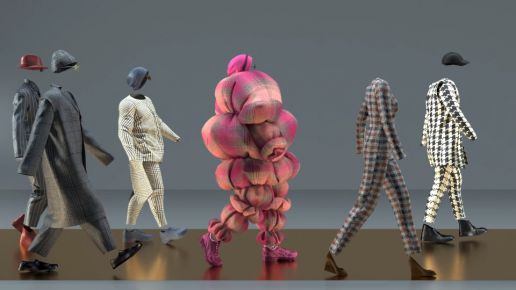
Brands, suppliers and retailers evaluate to digitize their value chain to reduce time in product development, gain cost efficiency and increase their eco-consciousness. Those brands and suppliers who prevent a digital option gain a significant competitive advantage over those that remain static.
We interviewed YÜNSA, as pioneers in the combination of sustainability and digitalization, they will offer a 100% digitalized collection in Spring.Summer 21. This and all successive collections will consist of fabric hangers for quality and hand feel reference as well as digital design and colour cards which are constructed and visualized in Penelope. Improvements in product development are expected to be up to 40% in terms of speed, cost and sustainability.
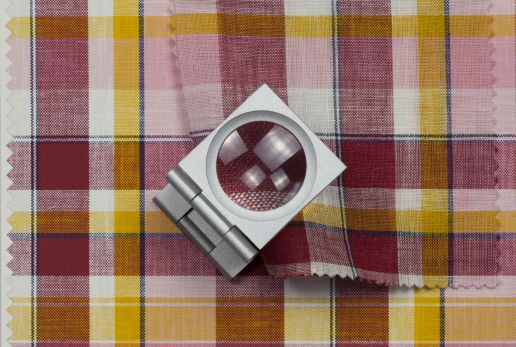
Digitisation goes hand in hand with sustainability, how are the digital connection tools used alongside the value chain to ensure sustainability?
Sustainability is not only about the raw materials but also the production process, chemical usage, waste management as well as time and energy consumption. Conventionally, as much as 80% of blankets and sample fabrics produced for either collections or customer requests were wasted and could not be used. If there are any mistakes in the finishing applications, fabrics need to be repaired and thus increases chemical usage and energy consumption, creating additional waste and pollution.
Digital product management is completely clean and fast. Developing a new pattern and colour variant takes less than an hour and is open to numerous corrections. With the possibility of simultaneous sharing via the cloud it does not rely on standard transportation methods which wastes time and resources. No waste, no pollution, fast and cost efficient.
What challenges have you faced throughout this process?
The biggest challenge is the resistance of the colleagues, managers and shareholders to the digital transformation. The industry and the laborers of our sector are very conservative in getting out of the traditional way of working. Financial and technical difficulties are easily overcome, as long as the team is open to change, believing in its benefits and supporting the process. We are lucky that Yünsa has an experienced, dynamic and enthusiastic team. Transformation is supported by the whole company. At this point, we should send a very special thanks to our information technologies team.
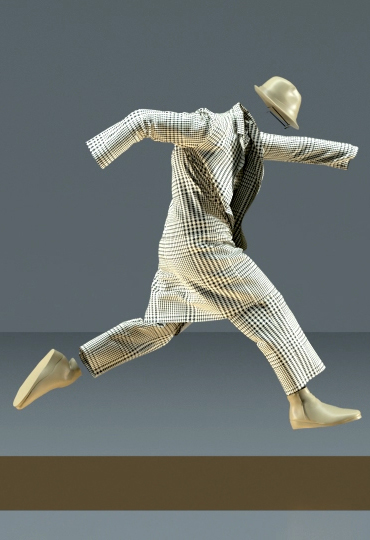
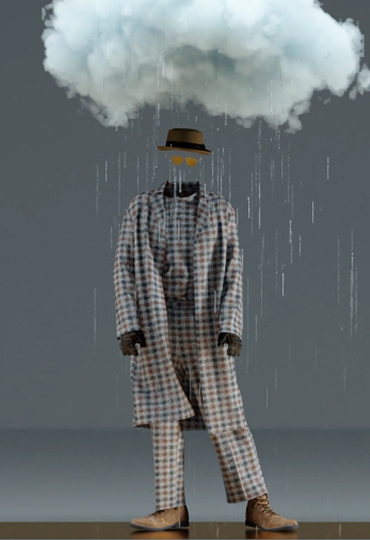
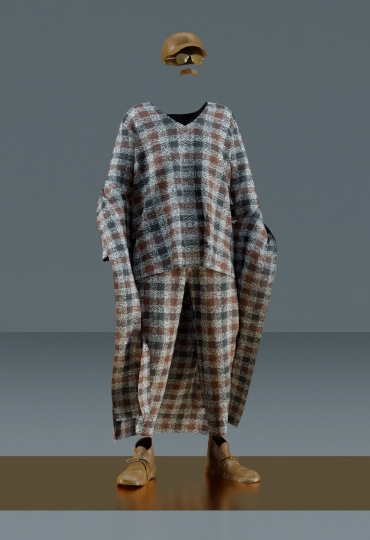
What were the initial steps of upgrading your sampling process with this new digital sampling process?
It all started with believing in digital transformation. We made the necessary technology investments in order to become pioneers in the sector, including Penelope CAD, Color Digital and ERP software. When our design team understood the benefits of digitization, they immediately took over the project.
We have digitized more than 9.000 yarn/colour combinations. This process is continuous as we create new yarns and colours every new season. For the Yünsa collections, we develop the designs and colour ways in our CAD software and create digital Yünsa collections. These collections will be available to customers in our online “Yünsa Shop” that will allow our customers and brands to browse the Yünsa collections, select and order fabrics, digital materials and make new requests.
Special customer developments are currently being developed in our CAD software and shared with customers via the cloud. The patterns are ready to be downloaded and fully integrated into the leading digital solutions such as CLO and ASSYST. For realistic simulation and digital decision making, the physical information based on measured parameters of our fabrics will also be included in the cloud library.
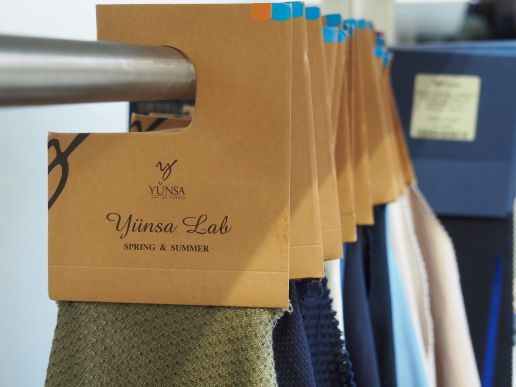
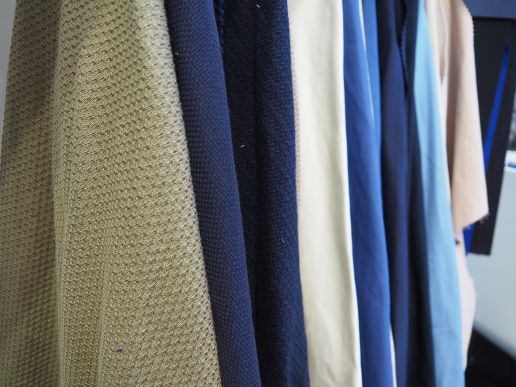
To what extent do you believe this is the future of production sampling for fashion?
Digital workflow is the real future of the fashion industry. We believe all parties of the fashion industry will experience the digital transformation in 3 to 5 years. Brands and suppliers who provide digital solutions will gain a significant competitive advantage over those that remain static.
What results have you seen in terms of cost and waste reduction?
Not much at the moment. As the majority of the industry is only at the stage of observation, alongside the digital versions we are still preparing the Yünsa collections and customer requests by traditional production means such as handlooms, blankets and sample meters, we haven’t seen a significant cost or waste reduction yet. Brands need to understand the benefits of this future workflow and start digital transformation instead of waiting others to step forward. Yünsa is ready to serve fully digital.
What are the benefits to the environment by embracing this new sampling process?
Digital workflow is clean and environmentally friendly. Expected minimum 40% sample production reduction means less dye stuff and chemical usage, less fabric waste, less energy & water consumption, less carbon release. I always use the “miraculous” expression for wool as the main raw material we use in Yünsa; natural, renewable, biodegradable, insulator, breathable, flexible, resistant and safe. Digital workflow is also miraculous; sustainable, eco-friendly, cost conscious, fast, standardized, precise.
Visit Yünsa at MUNICH FABRIC START on February 4-6 2020 in Munich, Section 1, Stand F103
Digital Fabric Lab – The Future Begins Now

Digitization 4.0 is one of the most important topics of the future when it comes to process control within the textile and fashion industry. At the same time, the digitization of fabrics in the preliminary stage of the clothing industry still poses a major challenge.
One of the key building blocks within these technical undertakings will be the digitization of materials and additionals. Digital material parameters such as elasticity, flexibility, tension and rigidity must be determined for the realistic presentation of textiles in product simulation. For these physical measurements, surfaces, colours and textures must be captured and combined in a technologically feasible way.
What this process of analysis looks like in practice, as well as how fundamentally this new achievement changes and accelerates production processes, is demonstrated by a DIGITAL FABRIC LAB which will be featured for the first time in KEYHOUSE.
‘We are convinced that in the future there will be a digital twin for every fabric or button presented. Through an innovative analysis process, the speed of the production process can be increased many times over. ‘
Sebastian Klinder, Managing Director MUNICH FABRIC START
In a community showcase initiated by MUNICH FABRIC START, leading specialist companies and university professionals have joined forces to demonstrate the individual steps in this new type of process in a comprehensive and practice-oriented manner using simulated digitisation stations.
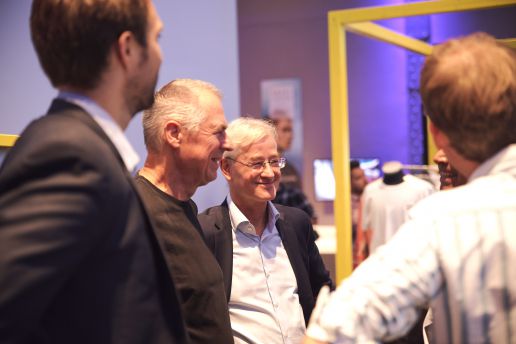
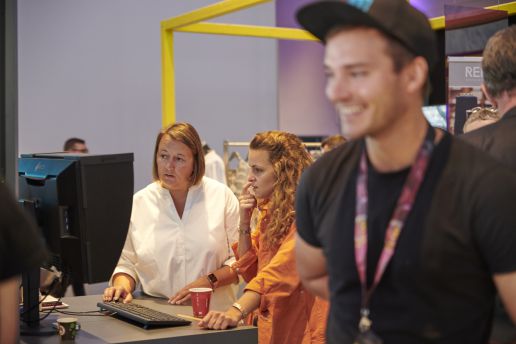
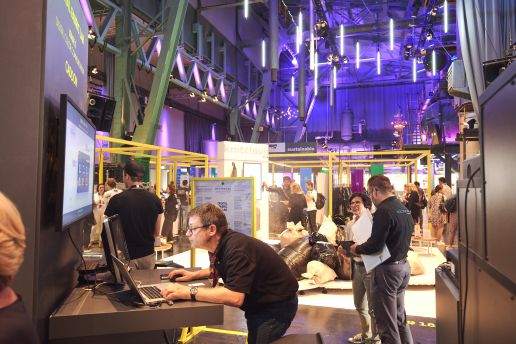
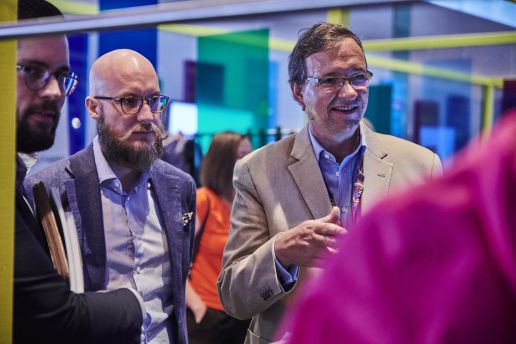
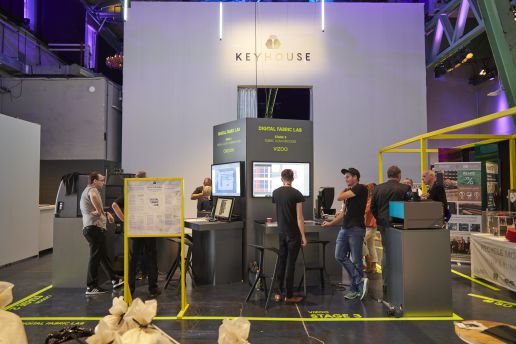
/ STAGE 1 /
# PHYSICAL FABRIC MEASUREMENT
The accurate and informative value of the virtual simulation will on the one hand depend on exact physical parameters for the true representation of the textile material. As well as the transformation into corresponding parameters assigned by the simulation material model and on the other hand it will also depend on exact model calculations.
To describe the material behaviour, the basis weight, the material thickness, the rigidity, the elasticity and the draping behaviour of the textile surfaces can be determined and processed accordingly. This makes it possible for the user to make design and fitting decisions on a purely virtual basis, both for products that will be close to the body as well as those positioned further away.

Technische Universität Dresden
Helmholtzstr. 10
01069 Dresden
Germany
/ STAGE 2 /
# DIGITAL COLOUR COMMUNICATION
Caddon’s multi-spectral technology provides the visually stimulative effects of the design’s colours as well as its spectral data measurements, pixel by pixel in a rapidly captured and communicated image data set, thus making a significant difference to single spectral colour measurement.
With Caddon’s colour digitization, accurate colour values are available where they are needed :
- – in the form of digital colour books with comprehensive colour codes for designers.
- – in the form of digital multi-spectral images for visualisations for production and marketing.
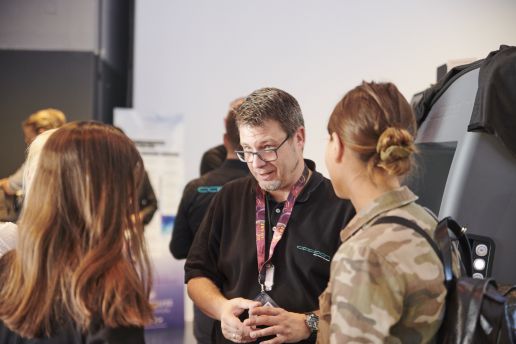

Caddon Printing & Imaging GmbH
Stadionstraße 6
70771 Leinfelden-Echterdingen
Germany
/ STAGE 3 /
# FABRIC SCAN PROCESS
The visual properties of a material sample, sized max. A4, are recorded with the xTex scanner within 1 to 2 minutes. The digitised material is then made into a Tileable, block pattern repeated seamlessly with the help of the xTex software, in a further 5 mintues. Tileable means that it is seamlessly repeated and can be applied to larger areas than initially captured using 3D application.
If necessary, in the following step we can use Caddon’s export colour data to colour or retouch the material using our xTex software for a more accurate colour representation. The finished digital material can then be used in Vidya, for example.
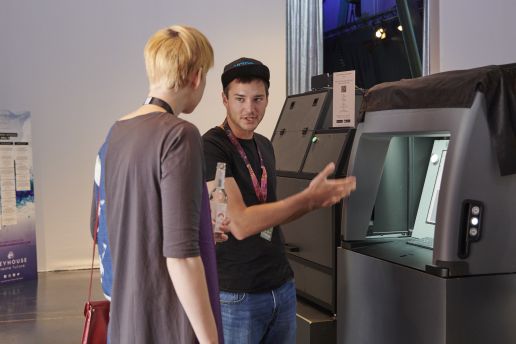

Vizoo GmbH
Johann-Karg-Strasse 30
85540 Haar
Germany
/ STAGE 4 /
# DIGITAL FABRIC SIMULATION & VISUALISATION
3D-Vidya offers the best simulation of cut and material. With 3D-Vidya a piece of clothing becomes digitally visible on the computer, creating realistic decision making bases for designers, product developers and all others involved in the creation process of a collection :
Cutting concepts are visualized.
- – A design becomes immediately visible and can be optimized.
- – Details immediately available including drapery, imprints, ornaments which can be optimally placed.
- – Texture and material properties including elasticity or material thickness, distance to body, gloss structures or wrinkle effects can be precisely represented
- – Fabrics up to 3cm with up to 21 layers can be simulated.
- – Colour management enables the binding of colours to be specified by importing spectral colours and rejecting them under a series of neutral lighting scenarios.
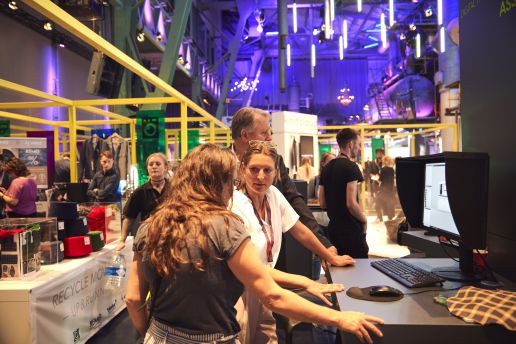

Assyst GmbH
Europaallee 10
67657 Kaiserslautern
Germany
/ STAGE 5 /
# REAL TIME QUALITY ASSURANCE
Based on the speed, transparency and accuracy of Triple Tree Solutions, premium quality management and assurance
solutions is ensured in every stage of textile and apparel manufacturing and sourcing. Using the intuitive and modern user interface, our online quality management system QUONDA visualise all measurements and evaluations throughout the chain. The results are available in real-time and accessible by all members involved, across all devices.
Here at KEYHOUSE we demonstrate the process of colour evaluation, as well as provide a summary and evaluation of the results of the four simulation stations. Digital colour matching between the manufacturer and customer significantly accelerates the procurement process, saves costs and also lowers the carbon footprint of the participating companies by avoiding unnecessary transport – Green Sourcing!

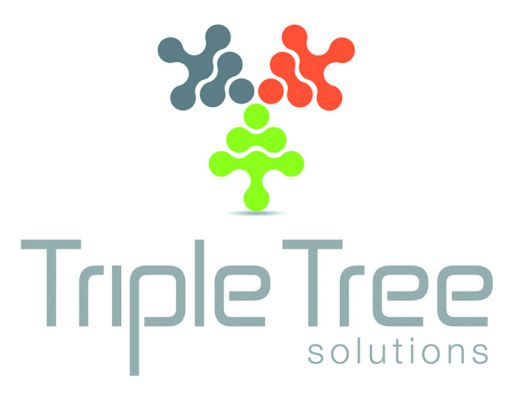
Triple Tree
Kaiserswerther Straße 115
40880 Düsseldorf-Ratingen
Germany


